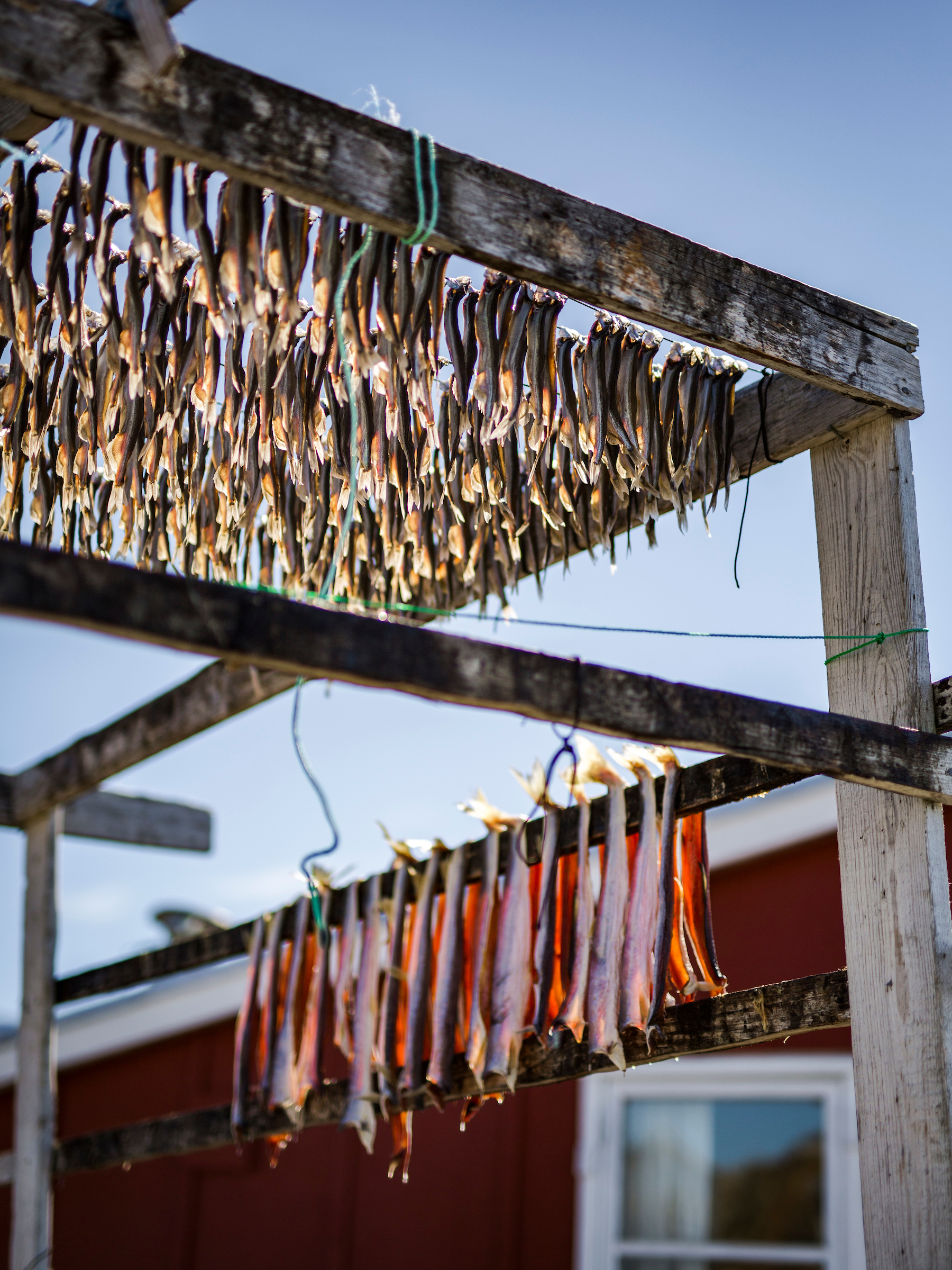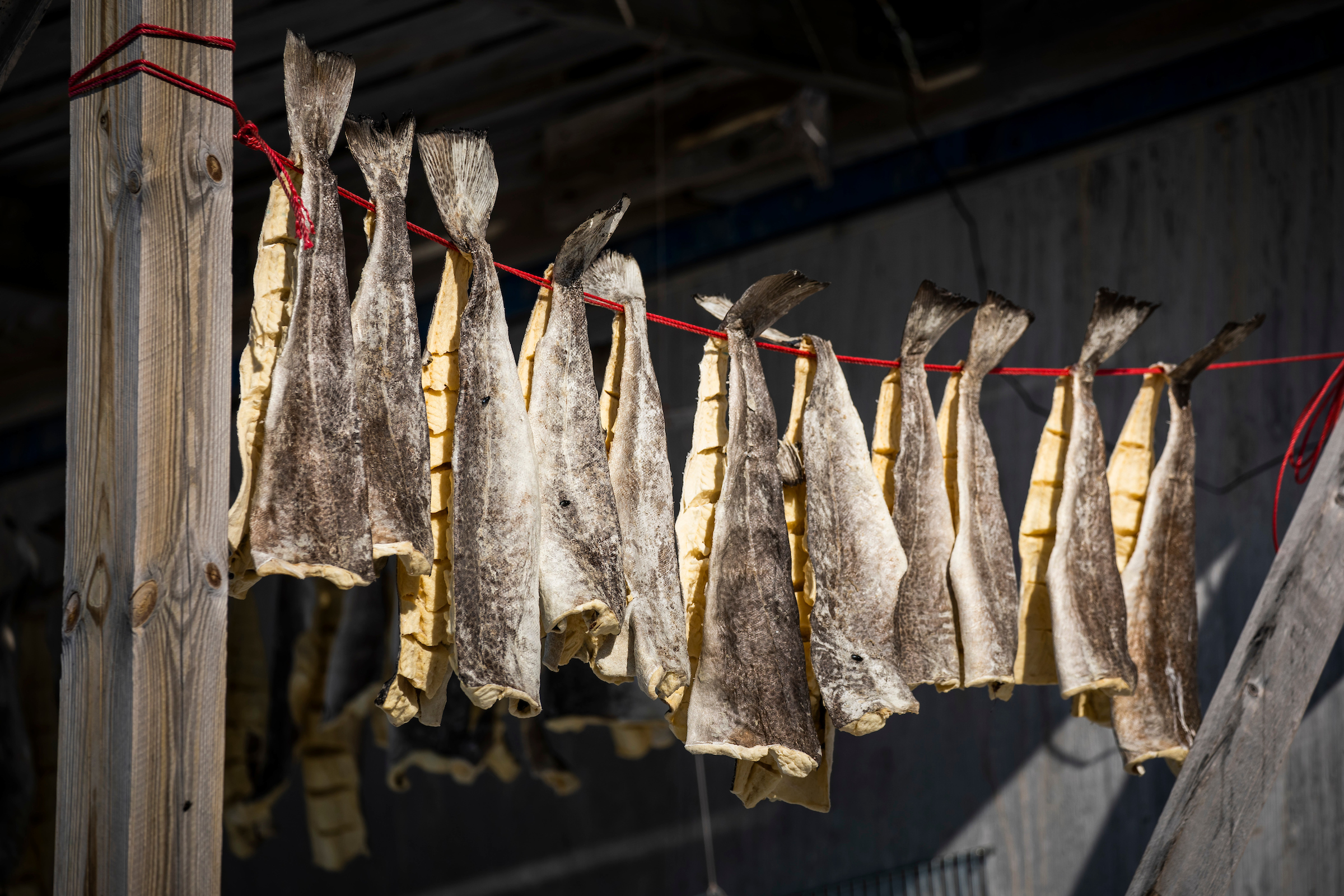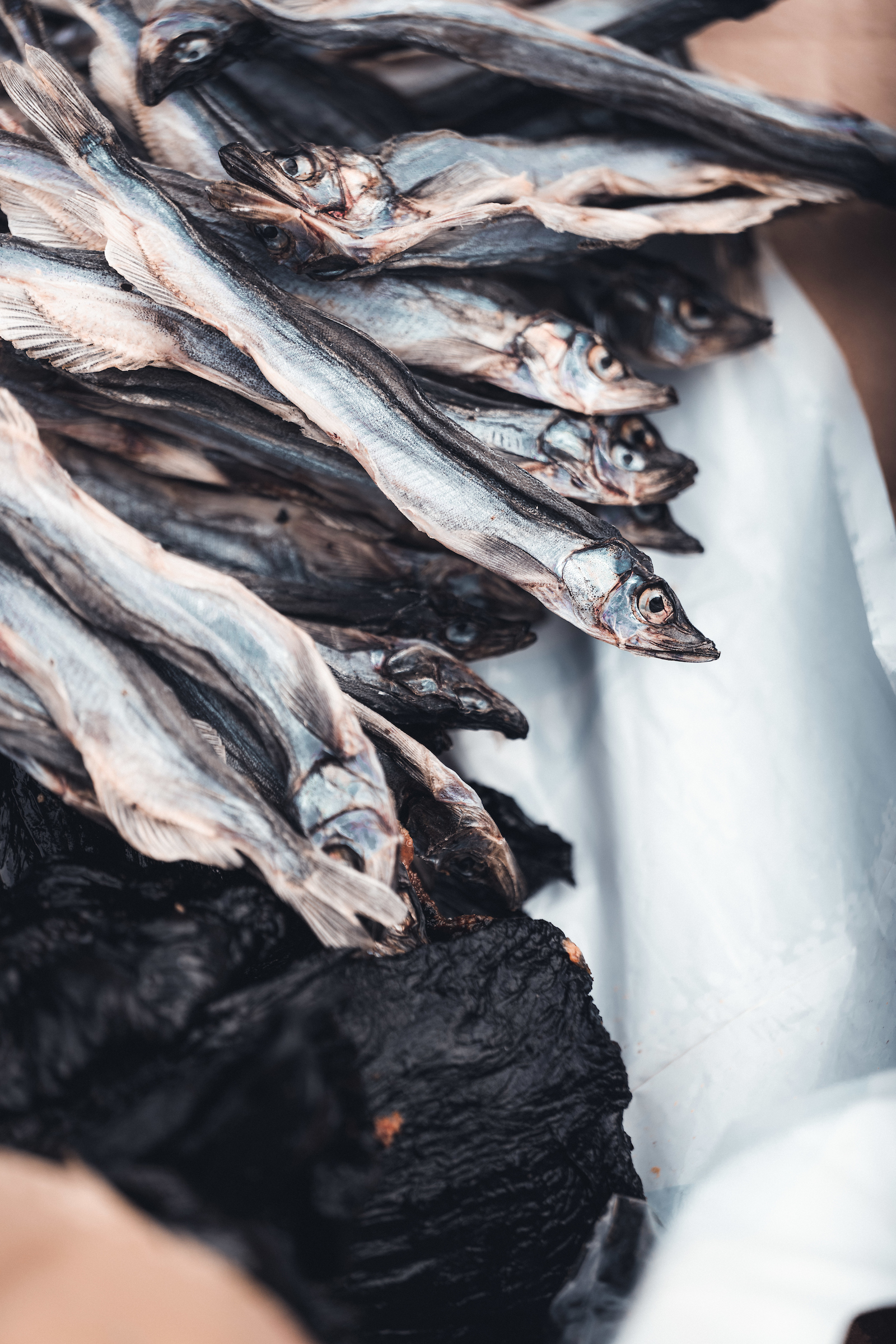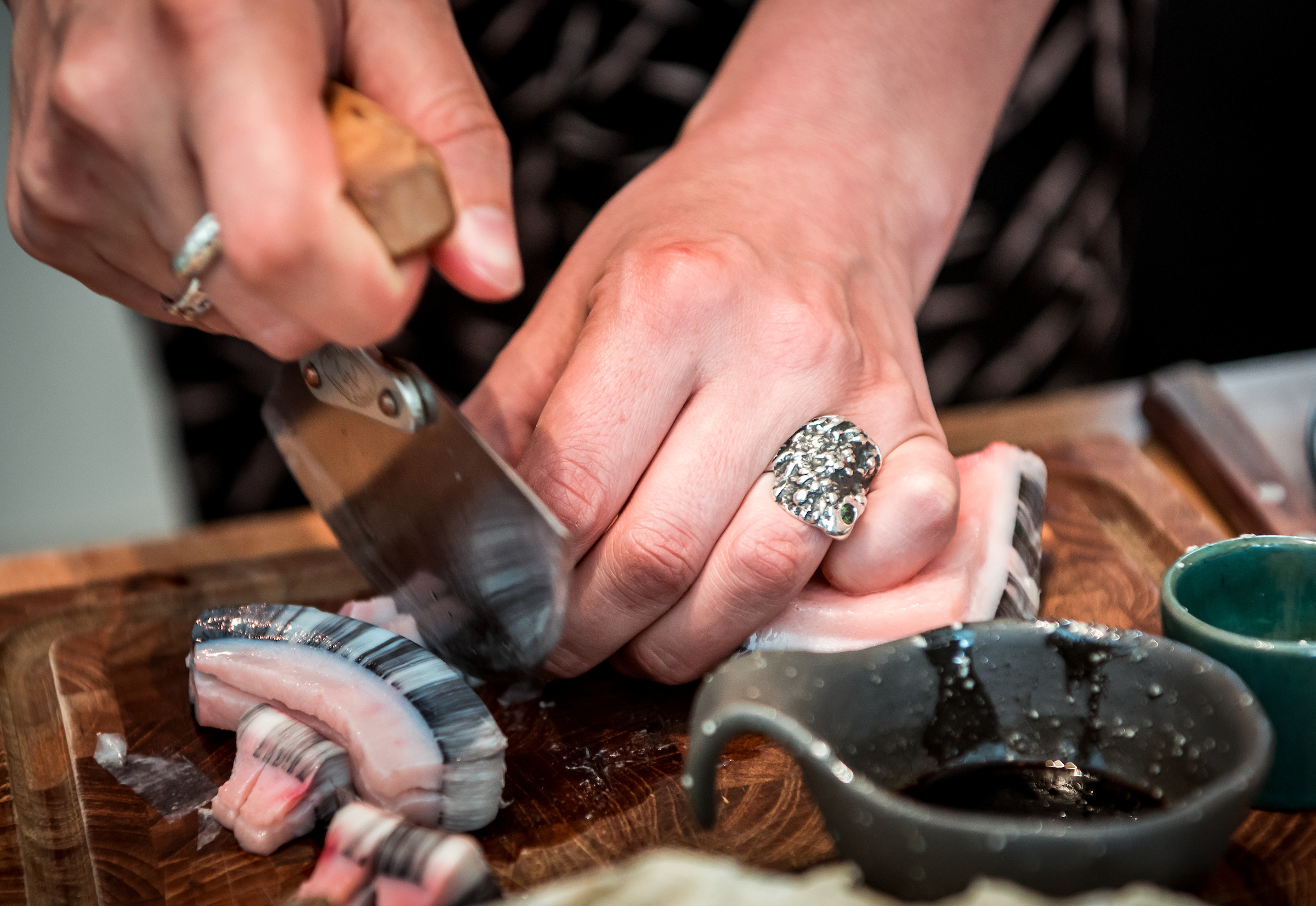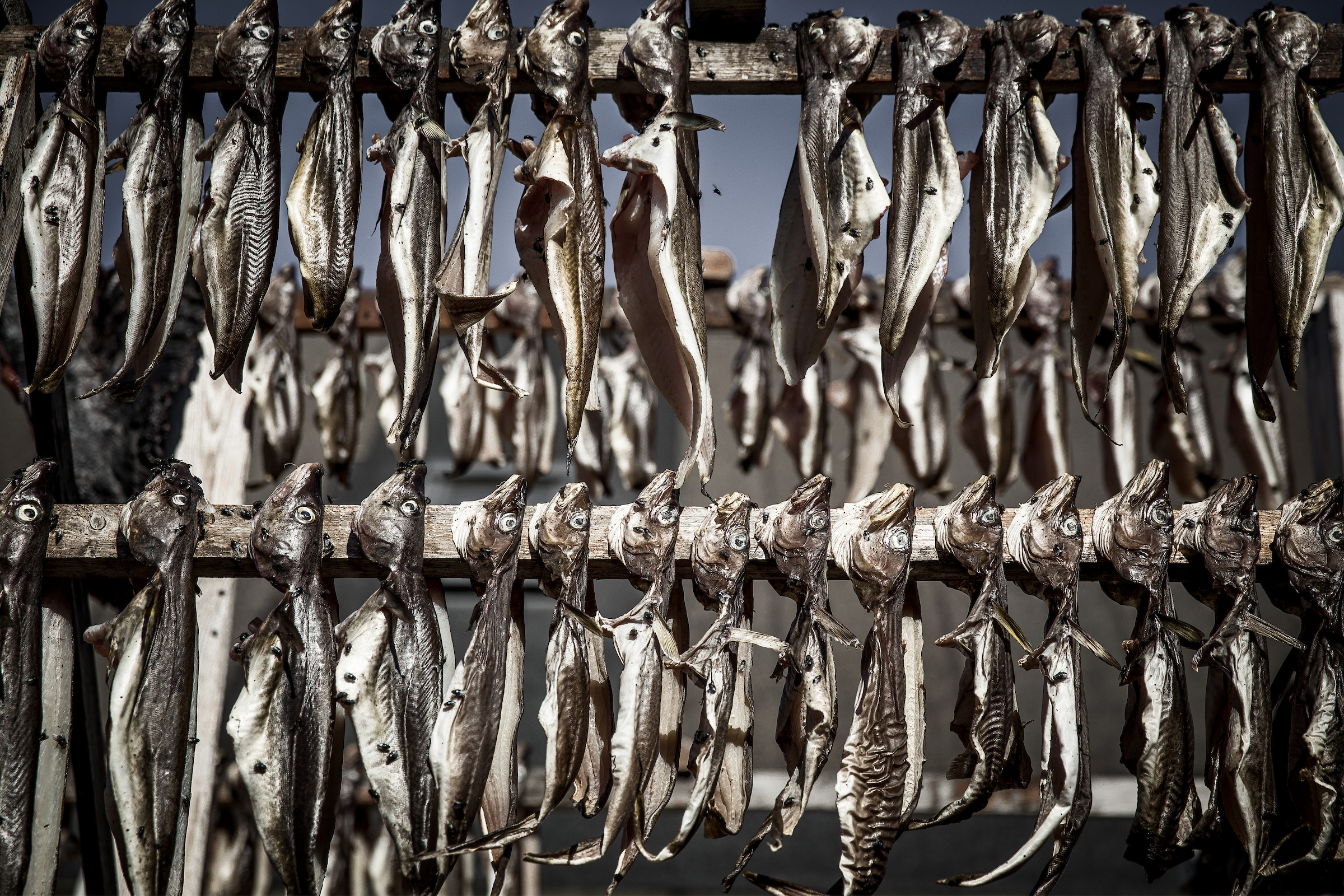Culinary Traditions in East Greenland
East Greenland offers a culinary journey deeply rooted in tradition and the bounty of its icy waters and rugged landscapes. The diet here is a testament to the Inuit’s deep connection with nature, primarily focusing on what the sea can provide complimented by the things that can be sourced from the land. East Greenland’s cuisine reflects its challenging environment and the ingenuity of its inhabitants. The traditional diet is heavily reliant on locally sourced, wild-caught, or hunted food that is rich in nutrients and adapted to the harsh Arctic conditions.
Still to date, meaningful hunting and fishing, which has been essential for their survival in many centuries, serves as a link between generations and a way to maintain a harmonious relationship with the environment. Meals are often a communal affair, where stories and traditions are shared, reinforcing the social fabric of the communities. From enjoying dried fish as a snack to savoring a hearty stew made from freshly hunted seal, dining in East Greenland offers a glimpse into the lives of the people who have thrived in this harsh climate for centuries. It’s an authentic taste of the Arctic, marked by simplicity, sustainability, and a profound respect for nature.
A list of the Most Common Local Food Sources in East Greenland
- Fish: Capelin, Halibut, Cod, Redfish, Wolffish, Arctic Char, Atlantic Salmon, Shorthorn Sculpin and Greenland shark
- Mussels: Blue Mussels, Blunt Gaper and Common Whelk
- Seaweed
- Seals: Harp Seal, Ringed Seal, Hooded Seal and Bearded Seal
- Whales: Narwhal, Minke Whale, Long-fin Pilot Whale, Beluga Whale*
- Walrus*
- Muskox*^
- Polar bear*
- Birds: Common Eider, Thick-Billed Murre and Black Guillemot
- Gull or Arctic Tern eggs
- Crowberries
- Blueberries
- Angelica
- Dandelion
- Herbs, like Arctic Thyme
- Arctic root
*Hunting only according to quotas given to the official licensed hunter in East Greenland
^Only in the Ittoqqortoormiit area
Preparations Methods of the Fresh Food
The traditional preparation methods in East Greenland are straightforward, reflecting the practical need for sustenance and the desire to respect the natural flavors of the food. Most common ways to eat East Greenlandic food is boiling in water, sometimes even sea water, which gives a distinct taste to the fish, drying, fermenting or simply eating it fresh and raw. Occasionally fish is being smoked. As with the seasonal movement and a lot of time spent outside in the fjords and land during summer, the food is often cooked over fire or a gas stove. The low humidity provides good conditions for drying food outside, knowing well whether the fish and meat has been dried during summer or winter will give the food a distinct taste. Using liquid fermented seal or whale fat as a dipping sauce for the dried meat and fish, is nowadays supplemented by Aromat, soy sauce or salt.
Fresh from the Sea to the East Greenlandic Freezer
The locally sourced food, which is still prepared and conversed in the families, is an integral part of people’s identity, knowing well the effort put into meaningful hunting, to gather sufficient supply of those foods for the entire year, as each type of food items has a specific season for hunting and collecting. The freezer allows for the seasonal food to become available in the home all year round. This means that everything from sun-dried fish to cured meats ends up in the freezer, ready to be enjoyed at a moment’s notice – it’s all about what you’ve got stashed away in that frosty treasure chest. Almost every home boasts a massive freezer (sometimes two), ensuring that there’s always a hearty meal on hand, especially through the dark, icy winter months.
Stocking up is crucial, especially when you consider the logistics of getting supplies in. Of course, everyone prefers to eat the good quality food, which is the locally sourced and prepared food from local food sources in the region. These foods are packed with natural goodness and a kaleidoscope of microbes you won’t find in any supermarket aisle. The taste of the landscape. For the Greenlandic people, the freezer is key to maintaining their traditional diet, which relies heavily on meat from seals, whales, fish, and birds. These items are often caught in bulk during specific seasons and then stored to ensure a steady supply of food. This practice allows families to continue consuming their traditional foods, rich in nutrients and adapted to the Arctic environment, regardless of the season.
Provisioning the Pantry: Imported Food Supply
All other food that is consumed in East Greenland needs to imported and brought in by the supply ship that only services the places along the East coast, when they are not blocked by the sea ice. Among the product variety are shelf products such as rice, pasta, milk, flour, sugar, and canned items such as tomatoes, beets or corn. Meat and vegetables, along with some Greenlandic products from the West coast are available frozen all year round. Cold cuts as well as butter and fast foods items are also available in the frozen section. Of course, coffee, tea, sweets, cookies, chips and sodas are also available year-round. Fresh fruits and vegetables, as well as fresh dairy products, eggs and cold cuts are not available during the summer month, or sometimes in very limited availability for very high prices during winter, if brought in by the plane from Iceland.
The supply ship services Tasiilaq and the surrounding settlements from the end of May until the beginning of December, which means that the other 6 months are mostly without fresh supplies and it can only be bought what is available from the supermarket’s storage and freezers. However, the shops in Tasiilaq have a bigger and better variety in products frozen and fresh that the surrounding settlements. The supply ship services Ittoqqortoormiit twice per year, once in July and once in September, which means that for 9 months all food items in the supermarket are from storage and freezers.
Nunamu Kuiddungu
The essence of freshness: cod, freshly plucked from the waters and simmered in seawater over a crackling open flame. Once cooked to perfection, the pot’s contents are cascaded onto the shoreline rocks. This ritual brings together both children and adults, who joyfully partake in the feast, savoring the fish directly with their hands. As the water drains and vanishes into the air, the feast begins directly from the stone, engaging with the meal in its most unadulterated form.
Tsuaasa
It is a traditional Greenlandic soup often made with seal, but also other meat can be used, depending on what’s available. Boiled together with an onion and small grain rice and seasoned with salt, it creates a thick and hearty soup. To make the soup even more flavorful the seal is put into the boiling pot immediately upon flensing, keeping some of the blood on the meat, which will make the soup a darker color and more flavorful. This dish is a staple, particularly during the colder months, providing warmth and nourishment, and because the seal meat tastes best during fall and winter, as this is when the seal is fatty and has a good amount of meat. Also known as one of the national dishes of Greenland (West Greenlandic: Suaasat).
Madda
More commonly known by the West Greenlandic term ‘Mattak’, madda—comprising the skin and blubber of whales, particularly the narwhal—is esteemed as a culinary treasure. Fashioned into small, raw cubes, it’s savored for its chewy consistency and decadently rich flavor. Madda stands out for both its nutritional benefits and distinctive texture. Laden with vitamins D and C, it’s a crucial source of nutrients that are otherwise scarce in the Arctic. Those who partake of madda experience its unique chewy and slightly crunchy texture, alongside a mild, sea-infused taste that captures the essence of Arctic waters. Presently, madda is often accentuated with condiments like soy sauce, aromat, or salt, further enriching its distinctive flavor.
Quujuu
Some would define this as an East Greenlandic version of a salad. This dish is often eaten for the National Day on the 21st of June, as Arctic roots have just begun blooming across the landscape after the snow-covered winter months. It is prepared with Arctic root, crowberries and sometimes angelica, nowadays added grapes and pieces of apples, depending on availability, which is mixed together in a bowl and all is marinated in fermented seal fat as the dressing. While served freshly made during National Day celebrations it can also be portioned in the freezer to enjoy throughout the year and taste great paired with dried ammatsaa, capelin fish.
Ammatsaa
The capelin fish is commonly known as Ammassatter, from the West Greenlandic term, which also has given the original name for the area of ‘Tasiilaq’, formerly known as ‘Angmagssalik’, the place with ammatsaa. The ammatsaa holds a subtle yet significant place in the Greenlandic diet. This small, silvery fish, thriving in the cold Arctic waters, emerges as a key player in the sustenance and culinary traditions of the Greenlandic people. Beyond its role in the marine food web as a crucial prey species for larger marine animals, capelin serves as a nutritious, accessible food source for the local communities. Rich in omega-3 fatty acids, proteins, and vitamins, the capelin is not only a healthful addition to the Greenlandic diet but also a versatile one. It can be prepared and enjoyed in numerous ways, reflecting the resourcefulness and culinary creativity of the Greenlandic people. Whether dried, smoked, salted, or eaten fresh, capelin is savored for its delicate flavor and tender texture. During spawning seasons, when capelin come closer to shore in vast numbers, communities often gather to harvest this bounty. Their arrival of the ammatsaa is a sign that summer is on its way and the first harvest from the fishers is eagerly awaited.
Culinary Crossroads
With the availability of Western and international food items and influences from cuisines all over the world, there’s been a growing interest in experimenting with these traditional ingredients, incorporating them into modern dishes. Such dishes would be sushi with madda, freshly cooked fish served with rice and a curry sauce or whale Steak with roasted potatoes. Frying and searing meat in the pan has also become a more widespread way of preparing the food. Another example would be the ‘Tasiilaq Garden’, a project by the social economic organization Siu Tsiu, experimenting with growing fresh herbs and vegetables in raised beds close to the stream in Tasiilaq.
About the Author

Anna Burdenski is a multifaceted individual with a rich tapestry of experiences spanning across continents. Born and raised in Germany, her journey took her through the vibrant cultures of Malaysia, the charming intricacies landscapes of Denmark, and the picturesque terrains of Austria. In November 2021, Anna chose to immerse herself in the pristine beauty of Tasiilaq, East Greenland. Initially venturing into the region for a research project, her deepening connection with the land soon saw her stepping into the role of a tourism coordinator for the newly established DMO Visit East Greenland in 2023. Her deep respect for local lifestyle, combined with her diverse background and commitment to showcasing the unparalleled beauty of East Greenland, positions her perfectly as a bridge between visitors and the rich tapestry of experiences East Greenland offers. Her journey from a globe-trotter with desire to immerse herself in diverse experiences to becoming part of the community in Tasiilaq centers around the intricacies of cultures and the splendor of nature as her source of inspiration. The rhythmic dance of the boat on the waves and the glint of the sun on the ocean became her meditation, a way for her to feel at one with the surrounding environment. Being exposed to and living with the elements requires a variety of skills, acceptance and patience, which connects to the rhythms of nature and weather.


